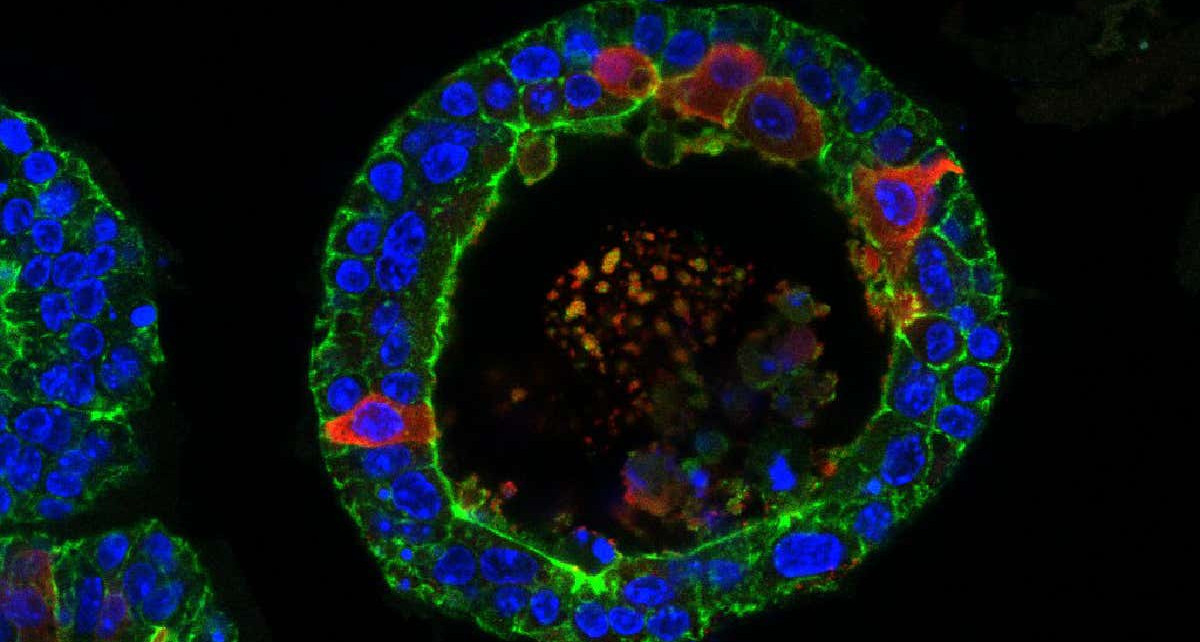[ad_1]

Lipocalin 2 (in red) is a protein found in tears that is made by the new organoids
Yorick Post/Elsevier
Miniature organoids that function like human tear glands have been grown in the lab – and they can produce tears. In the future, the organoids could be transplanted into people and used to treat dry eye diseases.
Tear glands, located near the inner corner of each eye, lubricate the eyes by producing a protein-rich fluid. This liquid also helps remove dust and bacteria to keep the eye clean and healthy. However, some people can’t produce enough of this.
Advertisement
Now, Hans Clevers and his team at the Hubrecht Institute in Utrecht, the Netherlands, may have found a way to help these people.
They created miniature organoids by taking cell samples from healthy tear gland tissue. Adult stem cells were isolated from these and treated with a cocktail of proteins, called growth factors, to help them grow into tear glands.
“Adult stem cells are already specialised and they know what to make – we just have to encourage them with growth factors,” says Clevers. “This happens within a matter of two or three days: you see small cystic structures appearing that grow into the organoids.”
The tear gland organoids measure just 0.2 millimetres across and could be grown and multiplied in the lab for up to a year to generate many more organoids.
Next, the team wanted to see if the tear gland organoids could produce tears. Our tear glands typically produce tears in three distinct contexts. They are generated for lubrication to keep our eyes constantly wet; after physical contact to reduce the risk of eye damage; and when we are emotional, triggered by hormone signals from the brain.
The researchers treated their organoids with a hormone called noradrenaline – the same brain hormone that makes us cry when we are emotional. Within half an hour, the organoids began to swell and fill with fluid – the same liquid that makes up our emotional tears, says Clevers.
“You could argue that the tears we show mirror those driven by brain signals,” says Clevers. “When we took the noradrenaline out, they slowly reabsorb the tears and keep on growing, but we occasionally see them burst if they build up too much pressure.”
To test if the organoids could be transplanted, they put them into the eyes of mice. Two weeks later, the organoids formed tear duct-like structures that remained in the mice for at least two months after transplantation. These tear gland organoids could treat a whole host of dry eye diseases in people.
The researchers have previously used similar technology to produce snake gland organoids that produce venom – and they hope to produce miniature tear glands for other species. “We are actually hoping to grow crocodile tear glands,” says Clevers. “We already know we can do it with reptiles, and it likely looks like it could be possible with crocodiles too.”
Journal reference: Cell Stem Cell, DOI: 10.1016/j.stem.2021.02.024
Sign up to our free Health Check newsletter for a round-up of all the health and fitness news you need to know, every Saturday
[ad_2]
Source link




